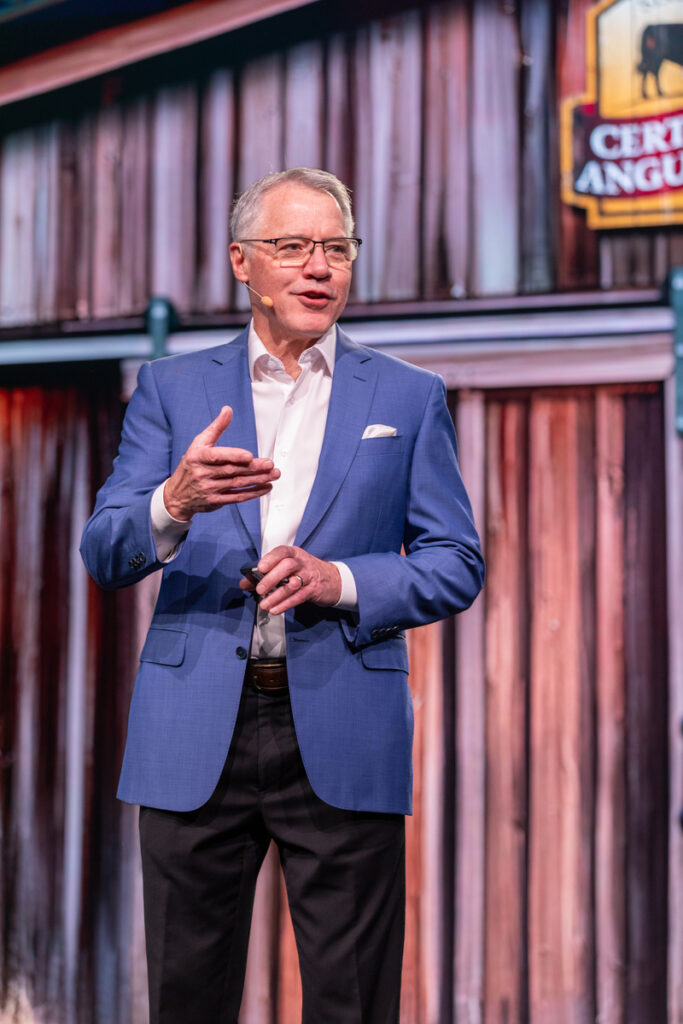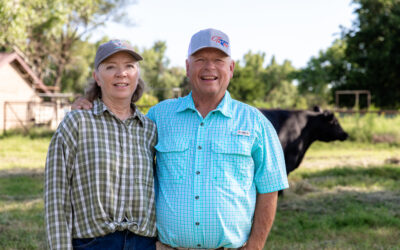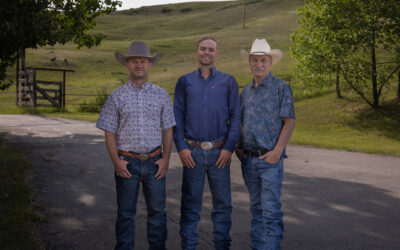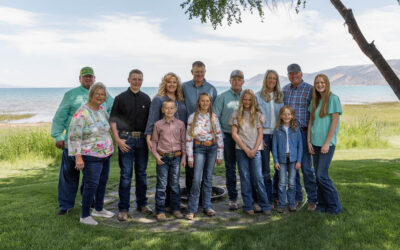
Keep the Supply Coming
Certified Angus Beef talks supply and demand dynamics, recognizes ranchers at Annual Conference.
by Lindsay Runft
October 7, 2025
Quantity and quality, the yin and yang to Certified Angus Beef ® brand product supply. While overall cattle herd numbers are down, carcass weights are up. And so is the overall quality for carcasses moving through packing plants. That’s the harmony for Certified Angus Beef (CAB), and a theme of the 2025 CAB Annual Conference.
A record-high 800 registrants from 17 countries gathered in Austin, Texas, to learn more about the Certified Angus Beef ® brand, become inspired by the culinary work of chefs and pitmasters, and celebrate sales and production success. But at the forefront: supply and demand, a reflection of the chaotic past year, and preparing for what’s ahead.
In his annual State of the Brand, CAB President John Stika, noted that the forecast for CAB’s annual sales volume looks to be one of the strongest years for the brand. That said, it’s not been without some peaks and valleys.
“The reality is that it’s [sales volume changes] more of a reflection of the price, supply and trade dynamics that we’ve seen,” Stika said. “They have created uncertainty in the market that we’ve dealt with, and are going to continue to deal with.”
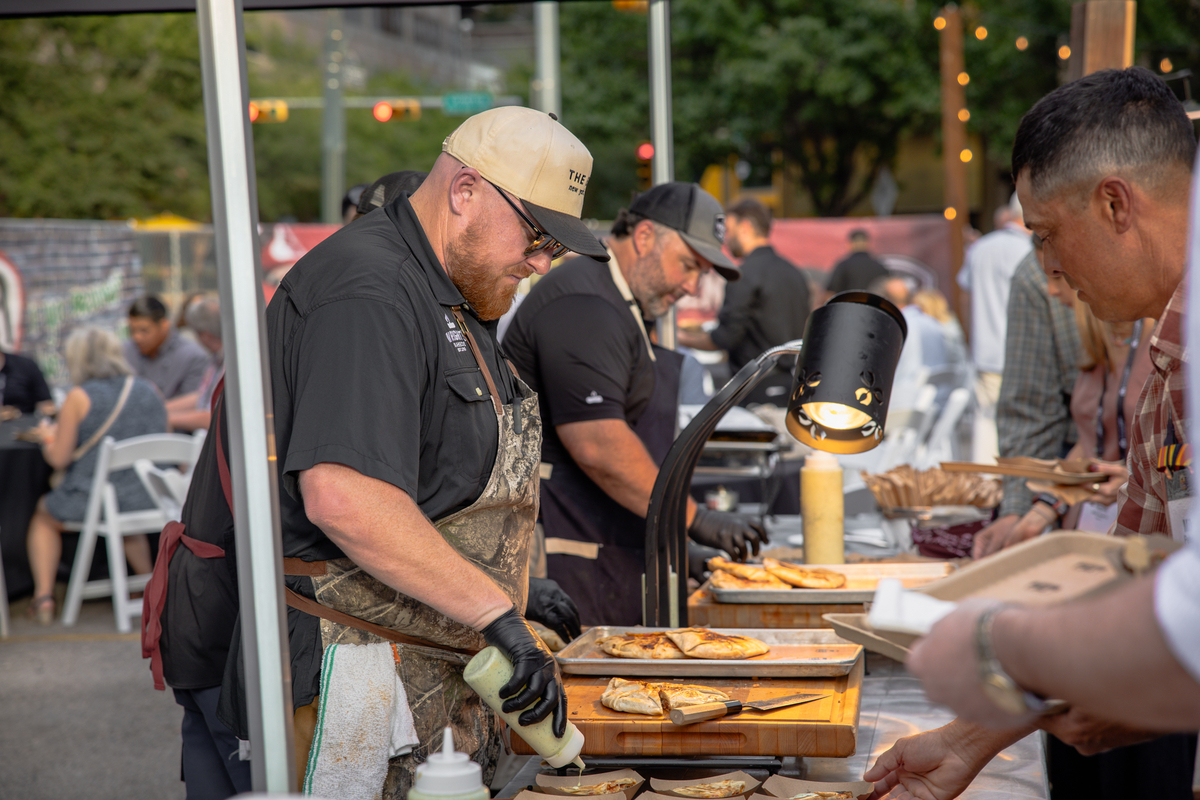
Beef in the Box
Marking the 25th time to speak at CAB Annual Conference, Randy Blach, chief executive officer at CattleFax, provided market analysis and insights for the beef industry. When it comes to overall supply, Blach said that we are currently in “the eye of the storm.” CattleFax’s 2025 forecast came to fruition: low herd numbers and high prices. Blach said then that prices were expected to peak approximately one year before the absolute low in supply.
Looking to next year, CattleFax forecasts that we will reach our beef production low at 25.7 billion pounds, largely because of the Mexico border closure and tariff levels on the markets where we import lean beef. Because of the New World screwworm threat, feeder cattle imports from Mexico are expected to be down more than one million head from a year ago—provided that the border stays closed through 2025.
“The market isn’t short on tonnage or supply, it’s short on cattle,” Blach said.
With a value system based on weight and quality, there has been incentive for cattle producers to keep feeding cattle longer. And that’s had a positive effect on beef tonnage numbers.
Currently, steer and heifer slaughter—the source of high-quality fed beef production—is down 43,000 head of cattle per week versus 2022, when this cattle cycle reached its peak. The Mexico border closure has had an impact on those numbers, too. On a typical weekly basis, approximately 25,000 feeder cattle cross the border from Mexico.
Blach said that futures markets will anticipate the low in supply, with prices usually reaching their peak before we hit the supply low. The market could stay elevated, but it is currently higher due to tariffs and the lack of international market access.
Deferred live cattle futures have been in the driver’s seat of the markets. After the markets closed in early July, and with the Mexican border closed and Brazilian tariffs in place, deferred live cattle futures contracts (Dec., Feb., April) went up about $30 per hundredweight. That resulted in $60 per hundredweight in feeder cattle prices and calf prices up about $100 per hundredweight.
“The market has had one heck of a run,” Blach said.
But for the million-dollar question: when will it reach its peak? Because of the chaotic times, economists have not been able to predict that.
Secondary to market-related questions, the next question is, “When will the herd rebuild start, or has it already?”
A herd rebuild has begun—albeit slowly, Blach said. Partially because of 8% interest rates, this cattle cycle’s rebuild will be slower than the last. According to CattleFax, commercial cow slaughter is down 30% and replacement heifers are estimated to be up 300,000 head.
But what about the beef on dairy population? With 9.5 million dairy cows and 28-29 million beef cows, the total cow herd is increasing. It is estimated that beef-on-dairy cattle slaughter is 4-4.5 million head, or 18% of total fed slaughter.
Blach noted that production for all proteins—beef, pork and poultry combined—is record high. And per capita red meat and poultry consumption is up, too. Consumers currently have an abundance of protein choices.
Consumer Demand is Rocking
“Supply has been flat, but prices have gone up,” Blach said. “What’s that tell you? Demand is rocking!”
With stability through spring and summer, beef demand is at a 40-year high.
“Beef is not just having a moment,” Anne-Marie Roerink, 210 Analytics, said. “It is growing a momentum and we’re seeing very high consumption of beef across all areas of the country, all demographics.”
Talking consumer behavior, Roerink explained the difference between consumption and demand. Demand is the desire to purchase beef, whereas consumption is permissibility and affordability.
No surprise to those at the meat counter, retail beef prices are $1/lb. higher now versus one year ago. Blach said that retail prices could still go up to $9.50-$9.75 per pound. But with beef at record-high prices, retail pounds have grown 6-7%, according to 210 Analytics research.
Consumer mindset on the “permissibility” of beef—if consumers feel good about consuming the protein—has shifted positively. As a beef community, we have moved the needle on communicating about attributes like animal care, environmental sustainability and nutrition.
“Beef has gone from villain to vital,” Roerink said.
That’s music to the ears of cattle producers. Demand for high-quality beef ensures profitability at the ranch. And it’s worth $1,070 per head according to CattleFax data.
Consumers continue to send the signal not only for quality beef, but Prime.
Cattle producers have responded. Earlier this year, USDA Prime production grew to 12%, outpacing USDA Select for several consecutive weeks. The trend was reflected at the brand, too. A record-high 13% of Certified Angus Beef ® brand carcasses graded Prime this past year.
“That’s not just progress; that’s proof that quality is winning,” Stika said. “It’s what allows us to be firmly committed to Certified Angus Beef ® brand Prime as a growth strategy, even in the face of tighter supplies and higher prices.”
Angus Families Recognized
For their commitment to progress and the pursuit of high-quality beef production, seven Angus ranching families were recognized at Annual Conference.
- Seedstock Commitment to Excellence: Tehama Angus Ranch
- Commercial Commitment to Excellence: Willis Ranch
- Feedyard Commitment to Excellence: 4K Cattle, LLC
- Sustainability: Means Ranch Company
- Progressive Partner: Zybach Angus
- Ambassador: Maplecrest Farms
- Canadian Commitment to Excellence: Cross Cattle Company
Beef Bash
From feedyard and ranchers to processors, food distributors, retail and restaurants, Annual Conference brings together all sectors of the beef supply chain. The event provides sessions for retail and foodservice, focusing on strategies for brand sales success.
Other events included the #BeefBash25 BBQ, featuring licensed pitmasters, a ranch tour at 2 Bar C Ranch in Luling, Texas, and a golf tournament and live auction that raised more than $157,000 for the Colvin Scholarship Fund.
Navy SEAL Commander, Rorke Denver, inspired attendees with lessons from the battlefield. Reflecting on the chaos of war missions, Denver said that for team leaders, “calm is contagious.” Denver also urged cattlemen and end-users to reject complacency and continually seek ways to improve their position.
It’s sage advice for the beef industry, with chaotic markets, the challenges of a tightening supply, and an ever-present need for premium beef that meets consumer demand.
Calm is contagious, and keep the high-quality beef coming.
You may also like
Zybach Angus Receives Certified Angus Beef Progressive Partner Award
Steve Zybach’s vision for smaller Angus producers to get more value for their calves through feeder calf sales with value-added programs led him to be recognized as the 2025 CAB Progressive Partner.
Cross Cattle Company earns Certified Angus Beef Canadian Commitment to Excellence award
Using disciplined breeding, genetics and hands-on management to raise Angus cattle that consistently hit high standards, Cross Cattle Company’s focus on quality earned them the 2025 Canadian Commitment to Excellence award.
Willis Ranch Earns Commercial Commitment to Excellence Award
Willis Ranch combines traditional stockmanship with modern genetic tools to produce cattle that thrive and meet high-quality carcass targets. Earning them the 2025 Commercial Commitment to Excellence award.

